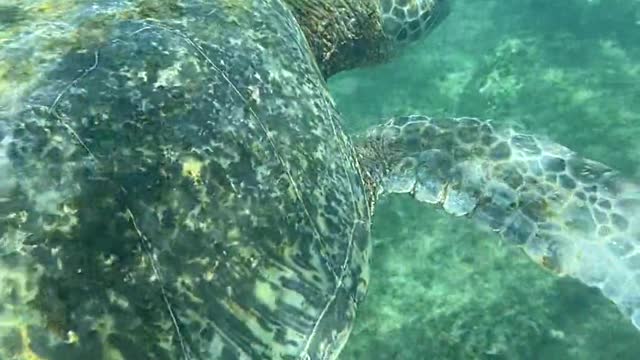Premium Only Content

HOW LONG DO SEA TURTLES FACTS| UNDER WATER TURTLES
/Unreal animals. As winter sets in and ice begins to cover our lakes and lakes, you might consider what befalls every one of the creatures living in the water. How would they make due?
A significant number of the sea-going turtles that live in northern Illinois spend the whole winter submerged, however they are as yet ready to get oxygen. Their capacity to "relax" submerged is a result of how their digestion is impacted by their internal heat level, as indicated by PBS News Hour.
Like all reptiles, turtles are ectotherms, which implies their internal heat level is dictated by their current circumstance. Assuming that the water they are in is 60 degrees F, their internal heat level is 60 degrees F. Assuming that the water is 32 degrees F, their internal heat level is 32 degrees F.
Contrast this with people and most different well evolved creatures, which are endotherms, which means their digestion permits them to keep a consistent internal heat level paying little mind to the temperature of their current circumstance. For instance, people normally keep an internal heat level of around 98.6 degrees F, while a pony regularly keeps an internal heat level between 99 degrees F and 101 degrees F.
For turtles, their internal heat level decides the pace of their digestion, PBS News Hour reports. As it gets colder and their internal heat level drops, thus, as well, does their digestion. This implies their pulse and breath rate drops, and they require less energy and oxygen to make due.
In the cold of winter, turtles enter a condition of brumation. Brumation is basically as old as, yet reptiles brumate while vertebrates sleep. During brumation, turtles don't need a lot of oxygen, yet what they need they can't get by breathing as they do in the hotter pieces of the year, as indicated by the McGill University Office of Science and Society. All things being equal, they utilize one more type of breath which is similar to breathing through their butts.
The specialized term for this butt-breathing is cloacal breath, and it's not exactly like the breathing you do, or even like turtles do when they are above water, as per the McGill University Office of Science and Society.
Through cloacal breath, turtles get oxygen from the water by moving the water over their body surfaces canvassed in veins. Turtles have a cloaca, which is basically their butt, that has a ton of veins, so the most productive method for getting oxygen is through the cloaca, henceforth the term cloacal breath.
Turtles aren't the main butt breathers in the set of all animals; it's genuinely normal among reptiles and creatures of land and water, as per McGill University. Other notable butt breathers incorporate frogs and lizards.
-
 1:28:41
1:28:41
Graham Allen
3 hours agoSenate Is STALLING ALL Trump Nominations!! + Is Trump Going After The Bidens?!
99.6K78 -
 4:56
4:56
Tactical Advisor
1 hour agoPSA X5.7 Update | Shot Show 2025
5.14K3 -
 2:58:41
2:58:41
Matt Kohrs
10 hours agoTrump Addresses WEF || The MK Show
39.8K2 -
 34:27
34:27
Rethinking the Dollar
1 hour agoThursday Morning Check-In: Trump Backlash & DOGE Savings Added To Debt Clock
9.41K1 -
 33:37
33:37
BonginoReport
5 hours agoGen Z Commies Are Plotting Violent Revolution Against Trump (Ep.124) - 01/23/2025
70.8K118 -
 LIVE
LIVE
Vigilant News Network
12 hours agoElon ATTACKS Stargate Project.. Is he RIGHT? | The Daily Dose
780 watching -
 1:05:34
1:05:34
2 MIKES LIVE
3 hours agoTHE MIKE SCHWARTZ SHOW with DR. MICHAEL J SCHWARTZ 01-23-2025
26.3K -
 1:31:27
1:31:27
Film Threat
17 hours agoLIVE OSCAR NOMINATIONS 2025 REACTION! HOLLYWOOD ON FIRE? | Academy Awards | Film Threat Awards
35.8K1 -
 1:23:45
1:23:45
Game On!
16 hours ago $3.90 earnedTom Brady critical of Patrick Mahomes abusing NFL sliding rules!
50.8K6 -
 6:01
6:01
Dr. Nick Zyrowski
1 day agoIs Beef Tallow healthy? Here Is How I Use It...
72.3K24